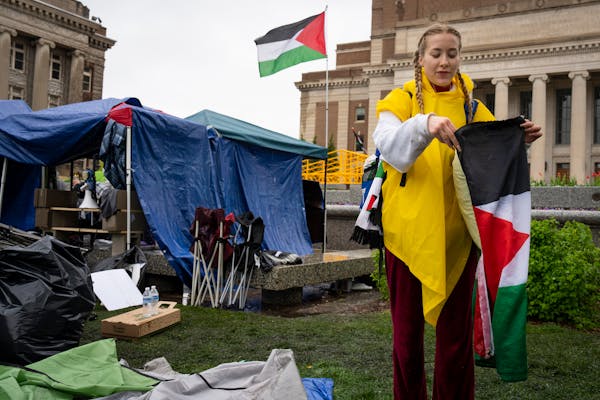Dozens of Minnesota school districts are seeking mediators to help negotiate contracts with teachers unions this year, including three of the biggest: Anoka-Hennepin, St. Paul and Minneapolis.
By law, mediation has to occur before a union can call a strike. But that doesn't mean that districts in mediation are necessarily headed toward a walkout in a year when settling teachers contracts has taken longer statewide.
"When we hear a district is in mediation, it is not a bad thing," said Denise Specht, president of Education Minnesota, the state's teachers union. "There's no shame in having a third party help you get to a resolution."
Altogether, 57 districts have requested mediation so far, a number that is slightly higher than usual but not unprecedented, said Johnny Villarreal, commissioner of the Minnesota Bureau of Mediation Services. The bureau typically gets involved in roughly 50 contract negotiations each bargaining cycle.
Gary Lee, deputy executive director of the Minnesota School Boards Association, agrees mediation is a valuable step in the process. Moving negotiations into mediation does "not indicate a strike at all," he said, and the process generally results in an agreement for both the district and its teachers. Seeing a higher number of districts in mediation this year indicates that the parties are starting negotiations farther apart than they have in the past.
"Mediation is an opportunity to bridge that gap," he said.
What starts the mediation?
Contract mediation usually begins when negotiations between the parties become non-productive. Either the employer or the union can file for mediation, and sometimes it's done jointly. But if one or the other files, the other party is bound by law to participate.
Who are the mediators?
The Bureau of Mediation Services has five mediators to cover the state, plus one open position it hopes to fill. Mediators' work is not limited to contract mediations with school districts — they also work with cities, counties, townships, public utilities and other public employers and their unions.
Mediator candidates typically have seven years of experience as a chief advocate for an employer or a union, though the bureau has lowered the requirement to five years to broaden the applicant pool for the open job. A law degree or a master's degree with a concentration in labor law or labor relations can count toward that experience.
"They have to have that bargaining-table experience," Villarreal said.
In the mid-1990s, the bureau had more than 30 full-time positions, he said. It has a staff of 11 today.
"We are not unlike most public agencies and trying to do more with less," he said.
Specht said unions expected a bit of a backlog with so many districts in mediation and a limited number of mediators, which may also be driving up the number of filings.
"People are just getting in line, thinking that they want to reserve a spot just in case things get really really bad or in case things stall," she said.
What does a session look like?
Mediation sessions are closed to the public. The session begins with district representatives and union leaders identifying issues to work out. The mediator then typically separates the parties and goes back and forth between them to work toward a resolution. In some situations, the parties come back together to hear proposals.
Once a tentative agreement is reached, the union then votes on it and the district handles the ratification process in a public meeting.
How long does mediation last?
The length of sessions and how many sessions are required varies widely, Villarreal said.
"It's dependent on the situation, the number of issues and the temperature at the bargaining table," he said.
He's been with the bureau since 2007 and remembers some cases that required just one hourlong session and others that stretched on for numerous sessions, including one that ran for 23 hours.
Negotiations can continue between mediation sessions.
What happens if mediation doesn't work?
In cases where the mediator is not able to help the parties come to agreement, the union can file an intent-to-strike notice. In Minnesota, teachers unions cannot file that notice until 30 days after the first mediation session.
Filing an intent to strike kicks off a 10-day cooling-off period, during which the parties again go to the bargaining table with a mediator.
If they can't reach an agreement, then the union members can strike, as happened with teachers in St. Paul in 2020 and Minneapolis in 2022.
Most cases are resolved before a strike takes place, Villarreal said.
Specht agreed: "Nobody files for mediation in hopes that they do go on strike."

Wolves vs. Nuggets series updates: Times for first four games set
Medical examiner identifies pedestrian hit by vehicle and killed in Bloomington
Souhan: A sausage? A knee surgery? Minnesota sports has gone mad

